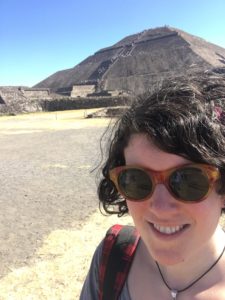 My last week in Mexico City was a whirlwind of preparations. Booking future side-trips, figuring out how many pesos I’d need to get through one last week, stocking up on items I needed to buy for the rest of my trip… And figuring out how to repack my bags in a semi-reasonable manner.
My last week in Mexico City was a whirlwind of preparations. Booking future side-trips, figuring out how many pesos I’d need to get through one last week, stocking up on items I needed to buy for the rest of my trip… And figuring out how to repack my bags in a semi-reasonable manner.
But I saved plenty of time for exploring the city, too.
I finally made it to the pyramids in Teotihuacán. The Sun and Moon pyramids are the most famous, but there are actually around a dozen pyramids scattered around the site, with more earthen mounds that have yet to be excavated hiding still more pyramids beneath them.
There, we learned about the mysterious origin of the so-called City of the Gods. Built between 100BC-250AD, it was the largest city in the Americas prior to Colombus’s arrival. Most people associate it with the Aztecs, but actually, by the time they discovered Teotihuacán, it had already been abandoned for centuries. The city fell around 750AD, most likely due to an internal uprising, though the jury is still out on that one.
Recently, archaeologists discovered several new tunnels beneath the site, including a tunnel beneath the Temple of the Feathered Serpent that’s still being excavated. Our guide, a local archaeologist with UNAM, plied the team working on the excavation with tequila, but sadly, they didn’t have anything new to report yet.
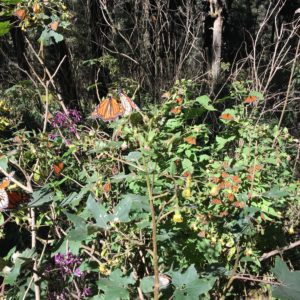 In addition to the pyramids, I trekked out to El Rosario Monarch Butterfly Sanctuary with a couple friends. This is a sanctuary for the monarch butterflies, who fly there from Canada every winter, then fly home every summer. For the moment, in the depths of January, they were in hibernation mode—but they still venture out during sunlight hours to eat/breed/all that good stuff.
In addition to the pyramids, I trekked out to El Rosario Monarch Butterfly Sanctuary with a couple friends. This is a sanctuary for the monarch butterflies, who fly there from Canada every winter, then fly home every summer. For the moment, in the depths of January, they were in hibernation mode—but they still venture out during sunlight hours to eat/breed/all that good stuff.
I’d never seen the monarch migration up-close, so it was definitely worth the trip (which involved an Uber, a bus, a taxi we paid to sit and wait for us to return, then a 45-minute hike into the mountains, for which I was not at all dressed properly. By the way, it’s a lot colder in the mountains…).
When we reached the top of the mountain and our guide pointed out the butterflies (in Spanish of course), I thought I had misunderstood him. All we could see in the trees were black clumpy masses, like clusters of dead leaves waiting to fall. Then he explained—the butterflies huddle together for warmth, so tightly packed that only the black edges of their wings are visible.
That is, until the sun hits. Then they wake up and start to fly between the trees, down to the ground… Even landing on us more than a few times.
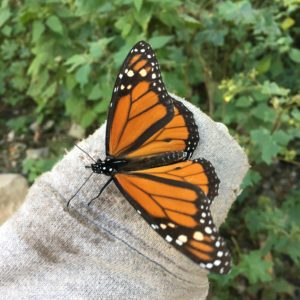
Dude butterfly
Luckily for us, we ran into another American woman traveling with her daughter, who had just finished raising some monarchs in her classroom for release. She taught us how to tell the males from females (males have black spots on their hind wings), among other useful tips.
After a carne asada (think Mexico’s version of a backyard cookout) on my Spanish teacher’s rooftop, followed by a day of relaxing at Hotel Habita‘s rooftop pool (pro-tip: even if you aren’t a hotel guest, they only ask that you spend a minimum of $200 pesos/~$10 USD at the poolside bar in order to hang out for the day—easy to do when they have an extensive food menu, not to mention micheladas on hand), I powered through the last few to-dos on my Mexico City list.
That included the free walking tour of the historic district downtown, which I cannot recommend enough. It’s one thing to read about the Aztec’s afterlife beliefs, but quite another to be taken down into the bowels of the city (below the modern street level, since Mexico City is slowly sinking) and led through an artistic representation of that underworld.
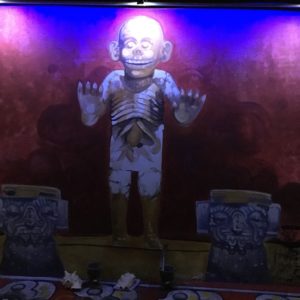
Chillin’ underground with Mictlantecuhtli
Plus, once the tour finished, we were in the perfect spot to enjoy a delicious mole and some cocktails at La Casa de las Sirenas, a mezcal bar downtown.
Our last night in Mexico City, we celebrated with a Remote Year-organized boat ride along the canals of Xochimilco, another must-do. There, you can still see the chinampas, vast floating rafts on which the ancient Mesoamericans cultivated farms and built homes. Mexico City used to be built on these rafts as well, until the lake where it originally sat drained. It’s truly a wonder of ancient architecture and ingenuity—and pretty fun to sail between, too.
But after that, it was time to say our (slightly hungover) goodbyes and board our flight to Bogotá. I’ll miss Mexico City, the history, the food, the art, the culture, and did I mention the food. But there will always be time to go back and hit any of the spots I missed. Until then, it’s off to the next city on our list!
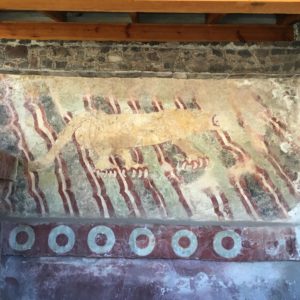
Thousand-year-old street art

Just your casual erosion-exposed tomb beneath the sinking cathedral…
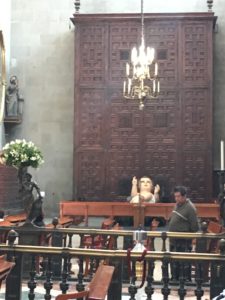
Also your casual giant baby Jesus in said sinking cathedral
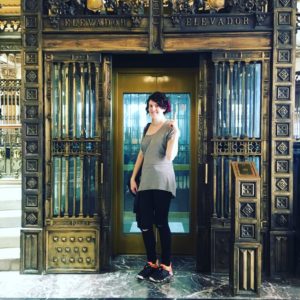
Elevator at the historic post office in downtown CDMX
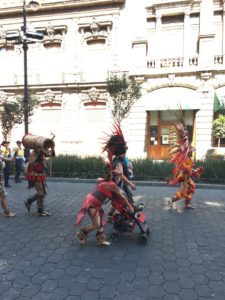
Street parade protesting gas prices
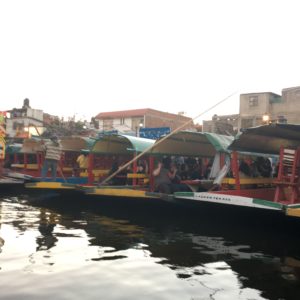
Boarding our fleet of boats on the Xochimilco canals
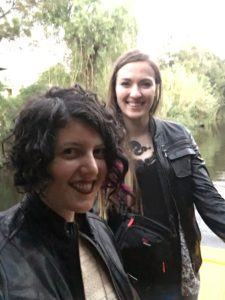
Canal selfie!




Leave a Reply